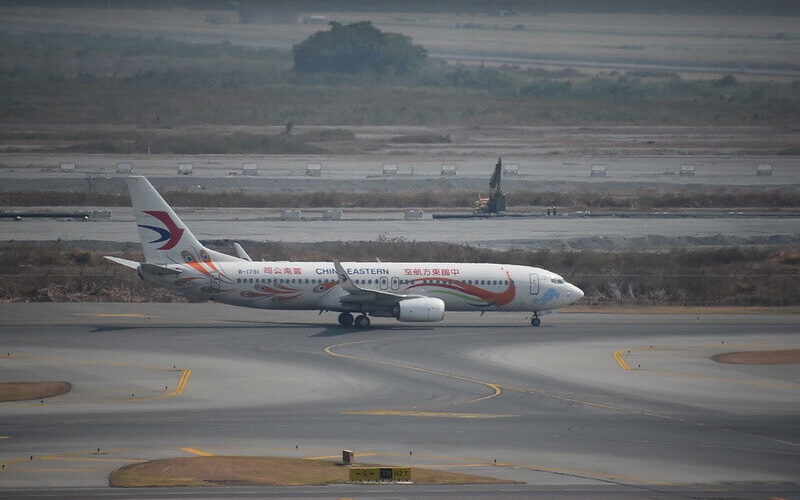A China Eastern Airlines Boeing 737-800 has crashed in a mountainous area of China. Hopes of finding anyone alive are fading after video footage of the crash and a fire at the site emerged.
CCTV News cites the Guangxi Emergency Management Department as saying that rescue teams have been sent to the passenger plane, with fire reported at the crash site. The incident occurred in Teng County, Guangxi on March 21, 2022.
The Chinese Civil Aviation Authority issued a statement confirming the crash and said there were 132 people on board, comprising 123 passengers and 9 crew members. Earlier reports had put the number on board at 133.
China Eastern confirmed the statement from CAAC in its first public announcement and said it was dispatching a working group to the scene and had opened an emergency assistance line for family members. Chinese state media outlet Yicai reported the carrier would ground all its 737-800 aircraft from Tuesday, March 22, 2022.
“The Civil Aviation Administration has activated the emergency mechanism and dispatched a working group to the scene,” the statement read.
Flight tracking data for flight MU5735 from Kunming to Guangzhou, registration B-1791, was lost at 0622 UTC, just over an hour after taking off, according to FlightRadar24.
ADS-B data showed the aircraft was cruising at 29,100 feet at 0620 UTC, before rapidly losing altitude and plunging to 3,225 feet when contact was lost. FR24 said the final descent rate was 31,000 feet per minute.
Credit: FlightRadar24
According to Aviation Safety Network’s database, China’s last fatal passenger jet crash was in 2010, when an Embraer ERJ190 from Henan Airlines crashed while landing at Yinchin Lindu Airport killing 44 of the 96 occupants.
Unconfirmed CCTV footage shows the aircraft inverted as it plunged to the ground, with pieces of the aircraft falling beside it. At such a rate of descent, it is not unusual for planes to suffer structural damage.
AeroTime in-house aviation expert and former pilot Captain Michel Treskin said investigators will have to sift through the wreckage, and the plane’s black boxes – the cockpit voice recorder and flight data recorder – to ascertain what happened to the aircraft in its final moments.
“There are many reasons why an aircraft is unable to recover from a dive, such as if the aircraft suffered structural damage prior to the upset,” he commented.
Detailed ADS-B data published by FR24 showed that the aircraft apparently managed to briefly halt the dive, recovering from 7,425 feet back up to 8,600 feet, before plunging again.
“It looks like someone tried to get it out of the dive but didn’t succeed. This shows they had some control over the aircraft,” Treskin added.
In air accident investigations, the state in which the incident occurred is usually responsible for leading the investigation, although representatives from the manufacturer and state of manufacturer will also be expected to take part, in this case Boeing and the NTSB.
The NTSB said it was monitoring the crash and would provide any updates via Twitter.
The aircraft, powered by CFM engines, had its first flight in 2015. It is an older model of the Boeing 737 than the 737 MAX.
Flight #MU5735 was flying from Kunming to Guangzhou. It took off from Kunming at 05:11 UTC. It was cruising at 29.100 feet until 06:20:59 when it suddenly started to lose altitude very fast.https://t.co/Lwo8klGf8g pic.twitter.com/QRt7lNIuoM
— Flightradar24 (@flightradar24) March 21, 2022
Updated at 1342 UTC with FR24 ADS-B details, report of China Eastern grounding 737-800s

